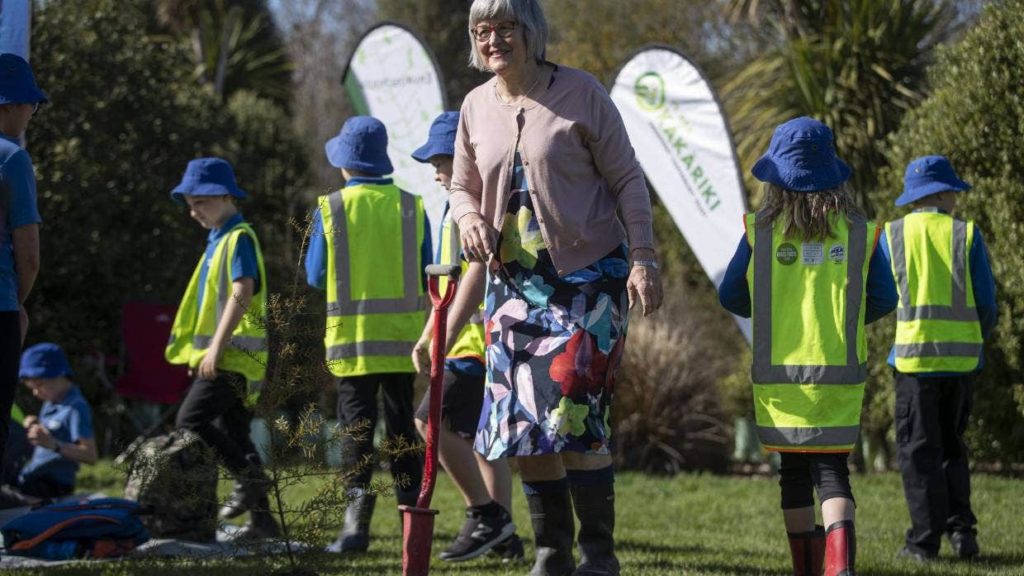
ePlant Tree Tag is an AI tree health monitor technology that monitors the health and productivity of trees. It is a small, lightweight device that is attached to the trunk of a tree.
The device collects data on a tree’s environmental conditions, such as temperature, humidity, and soil moisture. It also collects data on the tree’s health, such as its growth rate and leaf water potential.
It is a new application of AI to monitor and protect the health of our ever-diminishing wild places. In the case of forests, not only do they store huge amounts of carbon, but they also provide a habitat for a diverse range of plants and animals. They also regulate the temperature of the planet and change the soil structure below the canopy, increasing water availability.
Simple Technology, New Application
Beyond the commercialized product being sold by ePlant Tree Tag, other types of AI tree health monitors will soon be available. Using common technology that is already available, more advanced versions of AI tree health monitors are being developed. Some of the technologies that will be used are simple, and some more complex, but the key is to have them be durable and long-lasting to allow longevity in the field with little maintenance.
For example, temperature sensors will use a thermistor, a type of resistor that changes its resistance depending on its temperature. The thermistor is placed in the tree’s environment, and its resistance is measured. The resistance is then converted to a temperature reading.
The humidity sensor would be a capacitive sensor, which is a type of sensor that changes its capacitance depending on the humidity of its environment. The sensor is placed in the tree’s environment, and its capacitance is measured. The capacitance is then converted to a humidity reading.
The soil moisture sensor is also a capacitance sensor but is instead placed in the soil around the tree. The sensor’s capacitance changes depending on the moisture content of the soil. This change in capacitance is then converted to a soil moisture reading.
The leaf water potential sensor is a pressure sensor that is placed in the leaves of the tree. The sensor measures the pressure of the water inside the leaves. This pressure is then converted to a leaf water potential reading.
The growth sensor is a laser sensor that measures the distance between the sensor and the tree’s trunk. The sensor is placed on the tree’s trunk, and its distance from the trunk is measured over time. This change in distance is then converted to a growth rate reading.
The data collected by an AI tree health monitor is transmitted to the cloud, where it can be accessed by users such as scientists, foresters or other parties interested in the long-term health of the forest. They can use this data to track the health and productivity of the forest. They can also use the data to identify potential problems with their trees and to take corrective action.
When deployed on a large scale in forests that may be suffering from the effects of climate change, an AI tree health monitor system would be able to provide scientists with big data that could then be used in an ai model to help plan mitigation strategies to cope with drought, increased local temperatures or other conditions that may affect the health of the forest such as forest fires.
Fire Risk
An AI tree health monitor would detect changes in the environment that could indicate a fire risk. For example, the monitor can detect changes in temperature, humidity, and soil moisture. This information can be used to predict the likelihood of a fire and to take preventive measures.
Because the tag can detect changes in the temperature and humidity of the air around the tree, in case of a fire, the unit would show a sudden increase in local temperature and then cease to function, indicating the precise location of a fire and early detection. This information can be used to track the progress of the fire and to identify areas where it has spread, but most importantly, provide early detection of a fire allowing firefighters to move in and extinguish it before it grows.
It can be used to recommend fire suppression strategies because it can detect changes in the environment that could indicate the effectiveness of different fire suppression strategies. This information can be used to choose the most effective strategy for suppressing a fire in a specific location or weather conditions.
The ePlant Tree Tag could be used to reduce the risk of fire in the first place. In a forest with a history of wildfires, an AI tree health monitor could be used to monitor the health of trees in high-risk areas. If the tags detect changes in the tree’s environment that suggest that a fire is imminent, firefighters could be dispatched to the area to take preventive measures.
In a forest that is prone to lightning strikes, for example, AI tree health monitors could be used to monitor the weather in specific locations and to alert authorities if there is a risk of a lightning strike. This information could be used to evacuate people and clear the area of flammable materials.
In a forest located near a residential area, AI tree health monitors could be used to monitor the movement of people and vehicles. If the tags detect an increase in activity in a high-risk area, this could be a sign that a fire is starting. This information could alert authorities and evacuate people from the area.
The ePlant Tree Tag and other AI tree health monitors like it are valuable tools for scientists, arborists, farmers, and other individuals who are responsible for the care of trees. It can help them to ensure that their trees are healthy, productive and safe.
Source Happy Eco News




